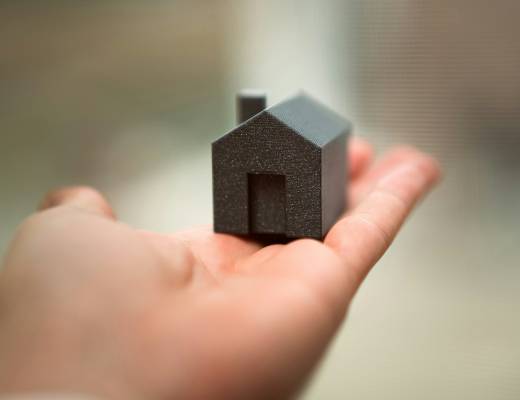Mortgages backed by the Federal Housing Administration (FHA) may have more flexible credit and income requirements than conventional mortgages, but there are still other considerations you may want to examine before deciding an FHA loan is suitable for your finances.
By understanding some of these lesser-known factors, you can better estimate the true affordability of your loan, and you can incorporate them along with an
FHA mortgage calculator to help you gain a more complete view of your mortgage payments.
This article outlines additional considerations for FHA affordability, including down payments, mortgage insurance, and loan limits.
Down payment size
Compared to conventional mortgage lenders, lenders for FHA-backed mortgages typically impose different requirements for down payments that may affect their affordability. This down payment amount may vary based on your credit score, but you’re typically required to make a down payment of at least 3.5% of your home’s value. If your score is lower, you may have to make a 10% payment.
While this required down payment amount may be lower than some other types of mortgages, it’s still worth considering when you’re shopping for FHA loans, especially if you have a lower credit score.
Mortgage insurance premiums
When you take out an FHA-backed loan, you’re generally required to
pay an Upfront Mortgage Insurance Premium (UFMIP) upon closing your loan, as well as an Annual Mortgage Insurance Premium (MIP) in monthly installments. According to the U.S. Department of Housing and Urban Development (HUD), the UFMIP is typically around 1.75% of the base
loan amount, while an MIP may depend on your loan amount, term, and LTV (loan-to-value) ratio.
So, even though FHA mortgages may have less stringent financial requirements, you should also account for your UFMIP and MIP payments whenever you’re considering an FHA loan.
Debt-to-income ratio
While many homebuyers may already be aware that their income will be taken into account when they apply for a mortgage, they may not realize that lenders also consider the amount of debt they already owe. To calculate your debt-to-income (DTI) ratio, lenders account for your monthly gross income and the total monthly amount of debt you owe.
To qualify for an FHA loan, you may be able to have a higher DTI ratio than for other types of mortgages, depending on your credit score and other financial factors. But even if you have a sizable income, lenders consider the monthly payments you make before they approve your mortgage.
With a potential tolerance for higher DTI ratios, FHA-backed mortgages may be a more feasible type of loan for you if you have more debt obligations.
Property taxes, homeowner’s insurance, and other property-related costs
Depending on your home’s location, you may have to pay property taxes, homeowner’s insurance, or HOA (homeowners association) fees—in addition to typical loan costs.
The cost of these different factors varies significantly. Different locales have different property taxes, and if your home is in a homeowner’s association, you may be charged dues for your property. Additionally, if natural disasters threaten your home more, you may pay significant costs for homeowner’s insurance. Before taking out a mortgage, consider these additional costs in addition to the standard expenses of your loan.
Closing costs
As with other types of mortgages, when you close your FHA-backed loan, you may
often pay several different closing costs. Besides your UFMIP, these expenses could include origination fees, credit check fees, appraisal fees, and points to reduce your interest rate. Closing costs can be significant, so carefully review your loan estimate, which should include an estimate of your closing costs, before you move forward with your FHA-backed mortgage.
FHA loan limits by location
The FHA sets limits on its loans based on the median home price in the county where the property is located. To qualify for an FHA loan, your home loan amount must not exceed the limit set for your region. Higher cost counties have higher limits set for their loans, which means you could have the opportunity to buy more expensive homes, but it also means that you might have to make higher payments and may be charged more taxes.
Limits on loans are a measure put in place to protect your lender’s liability for your loan amount, but they also limit the value of a home you can buy. If you feel like you want a home beyond the loan limit of an FHA-backed mortgage, you might want to look at other types of mortgages.
Understanding FHA affordability
Affording an FHA-backed mortgage depends on many factors beyond your creditworthiness and income, so it’s important to do your research while shopping around.
Remember to consider your home’s location. That way, you’ll see what the FHA loan limit is and how much you’ll pay in property taxes and homeowners’ insurance. You’ll also want to consider additional, under-the-radar costs associated with your mortgage, such as your UFMIP, MIP, HOA fees, and closing costs.
Once you know what type of costs to look for, you can increase your chances of finding the right FHA-backed mortgage that works for you.
Photo by Andrew Neel; Unsplash






